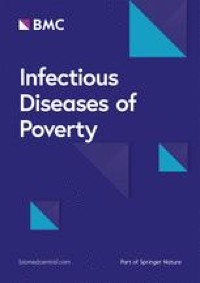China has been successful in controlling and eliminating malaria using various approaches, such as the 1-3-7 approach, mass drug administration (MDA), and the China malaria diagnosis reference laboratory network. These strategies have been implemented in different regions of China, including the Anhui Province of Huanghuai Plain and Sampov Loun in Cambodia. The 1-3-7 approach involves case reporting within one day, case investigation and classification within three days, and foci response within seven days. The MDA approach is used to reduce the prevalence of malaria, while the laboratory network is designed to improve the accuracy and speed of malaria diagnosis. Successful implementation of these strategies requires effective communication and monitoring of surveillance and response activities. China’s success in controlling malaria has implications for other countries in the region that are still struggling with the disease.
Malaria is a disease caused by various parasitic species of the Plasmodium genus. Plasmodium vivax is the most geographically widespread, and eliminating it poses unique challenges. A 2016 article in the American Journal of Tropical Medicine and Hygiene, authored by Howes et al., provides global epidemiology of P. vivax. According to the 2022 World Malaria Report by the World Health Organization (WHO), China eliminated P. vivax malaria in 2017. The WHO’s technical brief on controlling and eliminating P. vivax malaria, published in 2015, provides guidance on achieving elimination. In their 2020 article, Price et al. discuss the implications of P. vivax in the context of shrinking P. falciparum maps.
Malaria was first recorded in China in 1940, and P. vivax was the dominant species. Over time, China developed a comprehensive malaria control program, and by 1965, the incidence of malaria had decreased significantly. In 1991, Zhou published a book on malaria control and research in China, and in 2001, the Expert Advisory Committee on Malaria in the Ministry of Health (MoH) reported on the malaria situation in China in 2000.
However, P. vivax malaria re-emerged and caused a large outbreak in China’s Huang-Huai Plain in 2006. Zhang et al. conducted a case study on the outbreak and its preparation for malaria resurgence in China. China successfully eliminated P. vivax malaria in 2017, making it the first country in the Western Pacific Region to do so. The country’s efforts to eliminate the disease included comprehensive strategies like early detection and treatment, as well as targeting high-risk populations.
China’s malaria elimination program from 2010-2020 was established in the Action Plan of China Malaria Elimination, published by the National Health Commission (NHC). According to a systematic review by Xu et al., China has transitioned its radical, preventive, and presumptive treatment regimens for malaria. Battle et al. discuss geographical variation in Plasmodium vivax relapse, while White examines determinants of relapse periodicity in P. vivax malaria. Malaria research in China was first documented in 1965, with He’s publication on the topic.
Zhang et al. conducted a case study on P. vivax malaria re-emergence and outbreak in China’s Huang-Huai Plain in 2006. In their article, they examine the preparation of malaria resurgence in China. Howes et al. provide global epidemiology of P. vivax, while the World Health Organization’s technical brief on controlling and eliminating P. vivax malaria offers guidance on achieving elimination. China’s comprehensive strategies in eliminating the disease include targeting high-risk populations and early detection and treatment. In 2017, China became the first country in the Western Pacific Region to eliminate P. vivax malaria.
China’s success in eliminating malaria has been attributed to its innovative strategies and the effective implementation of malaria control and elimination measures. According to the National Health Commission’s action plan, China aims to eliminate malaria by 2020. This goal has been achieved through the implementation of measures such as mass drug administration, the use of insecticide-treated bed nets, and strengthening of infection source treatment. Geographical variation in Plasmodium vivax relapse has been observed in China, and the determinants of relapse periodicity have been studied. The Chinese government has also transitioned from radical, preventive, and presumptive treatment regimens for malaria. Key takeaways from China’s successful elimination of malaria have been identified to leverage existing evidence for a malaria-free world. The World Health Organization’s guidelines for the treatment of malaria have been used to guide malaria elimination efforts. A pilot study on malaria control was conducted in mountainous areas of Hainan province, China, using a new strategy of combining strengthening infection source treatment and health education. An ecological study in Jiangsu province, China, evaluated the effectiveness of mass drug administration for the control and elimination of Plasmodium vivax malaria. Anhui Province of Huanghuai Plain in China also experienced a vivax malaria resurgence and used mass drug administration in response.
China has been successful in controlling and eliminating malaria by implementing several strategies. In response to a vivax malaria resurgence in Anhui Province of Huanghuai Plain, China, mass drug administration was carried out. This initiative was successful in reducing the prevalence of malaria in the region. Additionally, establishing a China malaria diagnosis reference laboratory network for malaria elimination and implementing a communication and monitoring surveillance and response activities strategy known as “1-3-7” has played an important role in controlling malaria in the country. The emergence and control of infectious diseases in China have been a significant focus of research, and China’s success in eliminating malaria has been attributed to leveraging existing evidence for a malaria-free world. Furthermore, a pilot study on malaria control by using a new strategy of combining strengthening infection source treatment and health education in mountainous areas of Hainan Province was carried out and showed promising results.
Strategies of Plasmodium Vivax Malaria Elimination in Different Phases in China
In China, Plasmodium vivax malaria has been significantly reduced over the years. To further eliminate this disease, China implemented the 1-3-7 approach. This strategy requires health facilities to report malaria cases within one day, for local health authorities to investigate and classify cases within three days, and for the national center to confirm and report cases within seven days.
Cambodia and Thailand also employed the 1-3-7 approach in their malaria elimination programs. Sampov Loun in Cambodia has successfully eliminated malaria using this strategy. Meanwhile, Thailand’s 1-3-7 surveillance strategy for malaria elimination was found to be successful, but it requires continuous monitoring and maintenance to ensure its sustainability.
Moreover, China established a malaria diagnosis reference laboratory network to support malaria elimination. Communication and monitoring surveillance and response activities are critical to the success of China’s malaria elimination efforts.
Reflecting on China’s 70 years of economic and social development, it is clear that their approach towards malaria elimination has contributed to the success of their health policies. China’s determination and effort to eliminate malaria may inspire other countries in their fight against this disease.
Don’t miss interesting posts on Famousbio









